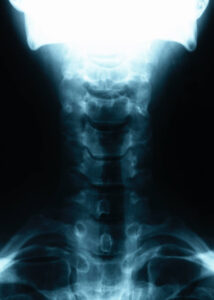Services
Services & Techniques
Here is some information on the different chiropractic services we offer. Please feel free to call us if you have any questions!
Patient Center
We use state-of-the-art chiropractic techniques to provide our patients with advanced spinal correction and adjustments. Chiropractic care is more effective today than it has ever been before, it is more effective and even safer as a result of the advancements in chiropractic techniques. Professional chiropractic care can help prevent you from getting injuries and will assist you in achieving optimal health.
Rapid Release Technology targets painful adhesions using resonance. RPT has determined the optimum frequency for maximum effectiveness. The frequency also triggers the Tonic Vibration Reflex or TVR. This frequency is well known to instantly relax muscle guarding, cramps and spasms. RPT is unique in the above properties as it operates many times faster than other therapeutic devices, and it feels good too.
The Drug Free, Surgery Free, Solution
This breakthrough therapeutic laser technology helps patients with issues ranging from back, neck and leg pain, shoulder injuries, plantar fasciitis, tendonitis, tension headaches, carpal tunnel syndrome, pinched nerves and other assorted issues. K-Laser is painless and safe, yet offers deep penetrating healing power.
Benefits of Laser Therapy
Class IV K-Laser Therapy is proven to biostimulate tissue repair and growth. The K-Laser accelerates the healing process by decreasing inflammation, pain, and scar tissue formation. In the management of chronic and acute pain, Class IV K-Laser Therapy can provide dramatic results.
- Numerous Studies show that Laser Therapy can reduce pain associated with:
- Tendinopathies
- Carpal Tunnel Syndrome
- Myofascial Trigger Points
- Tennis Elbow
- Lower Back Pain\Rib Pain
- Ligament Sprains
- Muscle Strains
- Repetitive Stress Injuries
- Chondromalacia Patellae
- Plantar Fascitis
- Rheumatoid Arthritis
- Osteoarthritis
- Shoulder, Back & Knee Pain
- Herpes Zoster (Shingles)
- Post-Traumatic Injury
- Fibromyalgia
- Diabetic Neuropathy
- Deep Edema / Congestion
- Sports Injuries
- Auto & Work Related Injuries
Our targeted neuropathy protocol using our Class IV K-Laser technology provides a painless, drug-free and nonsurgical approach to diabetic and peripheral neuropathy. Our neuropathy patients have seen quick reversal of their symptoms (burning, numbness, tingling) and improvement in activities of daily living related to their legs/feet or hands. Many of our neuropathy patients have experienced complete resolution of their neuropathy symptoms and others have had significant reduction in symptoms.
Describing a range of injuries to the neck caused by or related to a sudden distortion of the neck. Cervical acceleration-deceleration” (CAD) describes the mechanism of the injury, while the term “whiplash associated disorders” (WAD) describes the injury and symptoms.
Anatomy
There are four phases that occur during “whiplash”:
- Initial position (before the collision),
- retraction
- extension
- rebound
In the initial position there is no force on the neck due to inertia keeping it stable. Anterior longitudinal ligament injuries in whiplash may lead to cervical instability. They explain that during the retraction phase that is when the actual “whiplash” occurs, since there is an unusual loading of soft tissues. The next phase is the extension, the whole neck and head switches to extension, and it is stopped or limited by the head restraint. The rebound phase transpires as result of the phases that are mentioned.
During the refraction phase the spine forms an S-Shaped curve, and this caused by the flexion in the upper planes and hyperextension at the lower planes and this exceed their physiological limits this phase the injuries occur to the lower cervical vertebrae. At the extension phase all cervical vertebrae and the head are fully extended, but do not surpass their physiological limits. Most of the injuries happen in C-5 and C-6.
Symptoms
Symptoms reported by sufferers include: pain and aching to the neck and back, referred pain to the shoulders, sensory disturbance (such as pins and needles) to the arms and legs, and headaches. Symptoms can appear directly after the injury, but often are not felt until days afterwards. Whiplash is usually confined to the spine. The most common areas of the spine affected by whiplash are the neck and middle of the spine. “Neck” pain is very common between the shoulder and the neck.
Neck pain, although felt in the neck, can be caused by numerous other spinal problems. Neck pain may arise due to muscular tightness in both the neck and upper back, or pinching of the nerves emanating from the cervical vertebrae. Joint disruption in the neck creates pain, as does joint disruption in the upper back. Two-thirds of the population will suffer from neck pain at some point in their lives.
The most common causes of neck pain include:
- Stress
- Prolonged postures
- Minor injuries and falls
- Referred pain
- Over-use
- Whiplash
- Herniated disc
- Pinched nerve
- « Previous
- 1
- 2
- 3
- 4
- Next »



